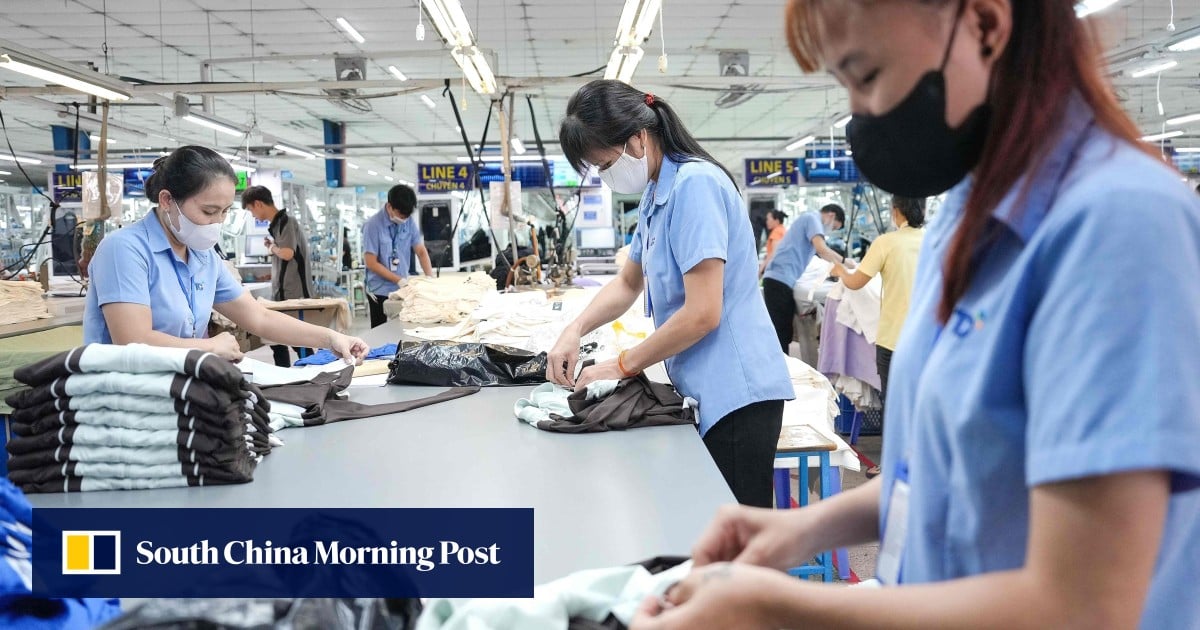
The Shifting Sands of Global Manufacturing: Vietnam’s Tariff Troubles
The global landscape of manufacturing is rarely static, a fact currently being painfully underscored in Vietnam. For years, Vietnam has been a magnet for foreign investment, particularly from Chinese businesses seeking to circumvent escalating trade tensions. The allure was simple: access to a growing market, relatively low labor costs, and—crucially—a perceived safe harbor from the escalating trade war between the US and China. However, this carefully constructed haven is now facing its own turbulent waters.
The initial wave of Chinese investment, driven by the desire to avoid US tariffs, saw a surge in factory construction across Vietnam. Industries ranging from textiles and footwear to electronics and furniture saw a significant influx of Chinese capital and expertise. This influx, while initially boosting Vietnam’s economy, also created a certain degree of dependence on this particular sector of foreign investment. It fostered rapid growth, but also potentially masked underlying vulnerabilities.
Now, a new wave of uncertainty is sweeping through these same factories. The seemingly unshakeable advantage of avoiding US tariffs is eroding. Recent shifts in US trade policy have resulted in tariffs being levied on goods originating not just from China, but also from countries seen as circumventing existing measures. Vietnam, despite its independent status, is now feeling the sting of these secondary tariffs.
This situation has left many businesses, especially those with Chinese ownership, in a precarious position. The initial investment, the setup costs, the hiring of local staff—all represent significant sunk costs. Relocating again would be enormously expensive and time-consuming, potentially wiping out any profit margins. Yet, continuing operations under the weight of these new tariffs makes profitability increasingly challenging. Many business owners face a daunting dilemma: should they adapt, cut losses, or find a new, elusive haven?
The impact stretches beyond the individual factory owner. Vietnam’s economy, while still growing, is experiencing the ripple effects of this trade uncertainty. The sudden increase in tariffs threatens the stability of supply chains, putting pressure on both Vietnamese and international companies. The increased cost of goods impacts consumer prices, potentially dampening demand both domestically and internationally. The very growth that was fueled by the initial influx of foreign investment now faces a considerable headwind.
Furthermore, the situation raises questions about the long-term viability of relying on shifting global trade dynamics for economic growth. While Vietnam’s strategic location and relatively low labor costs offer attractive benefits, the current situation highlights the inherent risks associated with being overly dependent on a single source of foreign investment, especially one driven by geopolitical instability.
The uncertainty facing Vietnamese factories with Chinese ownership underscores the complex and ever-evolving nature of global trade. The search for a stable manufacturing base isn’t simply about finding low labor costs; it’s about navigating a volatile geopolitical landscape and predicting—or at least adapting to—the unpredictable shifts in international trade policy. The future of these factories, and indeed, a significant segment of Vietnam’s economy, hinges on finding a path to navigate these turbulent waters. The question isn’t just ‘where can I go now?’, but ‘how can I build a more resilient future in a constantly changing world?’



Leave a Reply